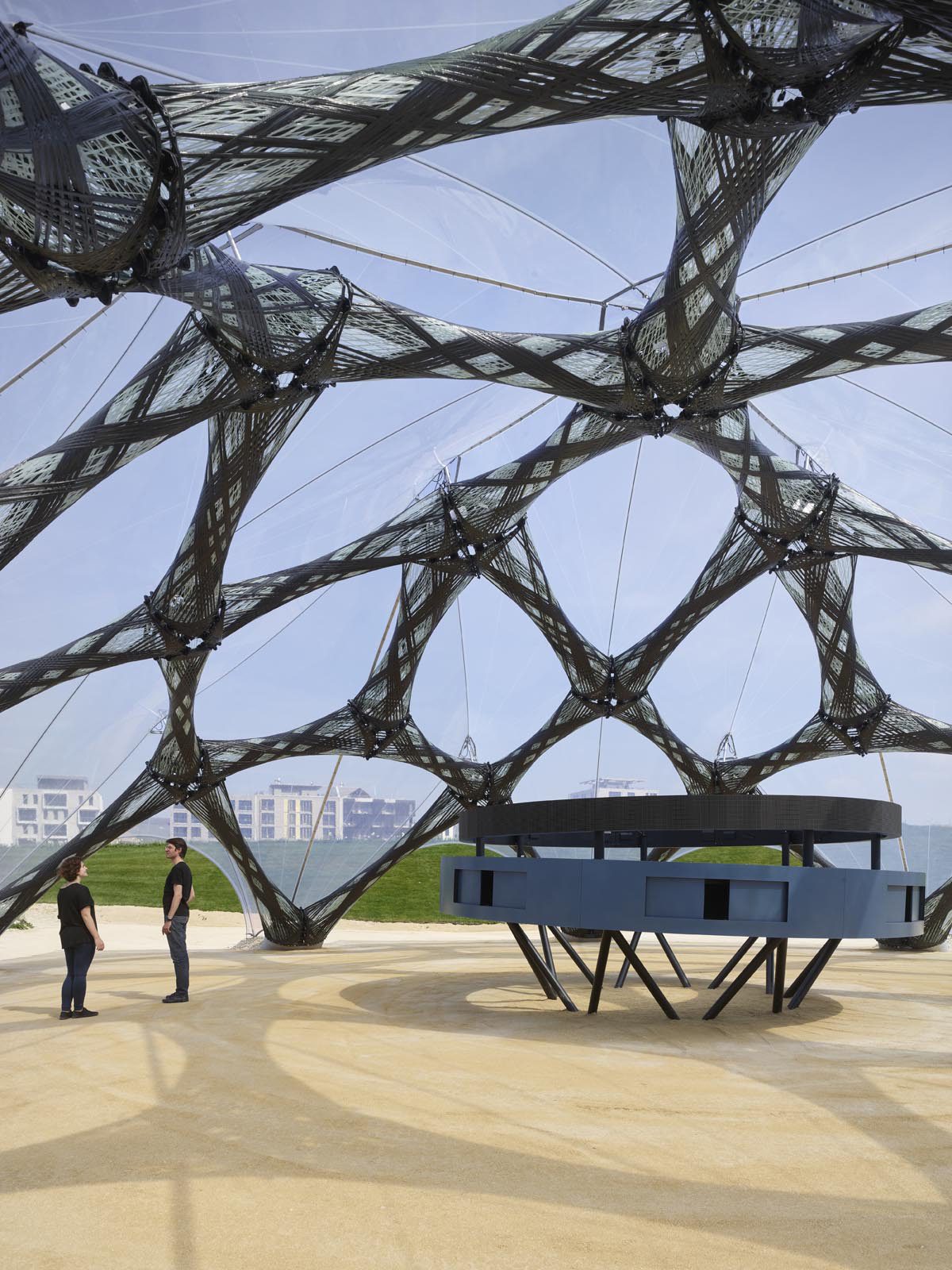Biomimetic research in architecture at the University of Stuttgart is behind the glass- and carbon-fibre structure of a pavilion
The BUGA Fibre Pavilion was designed for the grounds of the Bundesgartenschau (BUGA) in Heilbronn, Germany; a biennial horticultural show that changes location from one event to the next. Its structure builds on many years of biomimetic research in architecture at the Institute for Computational Design and Construction (ICD) and the Institute for Building Structures and Structural Design (ITKE) at the University of Stuttgart.
Cutting-edge computational technologies combined with constructional principles found in nature have enabled the development of a digital building system. The pavilion’s loadbearing structure is robotically produced from advanced fibre composites only. The resulting building is exceptionally lightweight and provides a distinctive spatial experience.
In biology most loadbearing structures are fibre composites, made from fibres such as cellulose, chitin or collagen, and a matrix material that supports them and maintains their relative position. The performance and resource efficiency of biological structures stems from these fibrous systems. Their organisation, directionality and density is finely tuned and locally varied, in order to ensure that material is only placed where it is required.
The BUGA Fibre Pavilion was designed to transfer this biological principle of load-adapted, highly-differentiated fibre- composite systems into an architecturally-conceived structure. Manmade composites, such as the glass- or carbon-fibre-reinforced plastics used here, share their fundamental characteristics with natural composites.
Only a few years ago, the pavilion would have been impossible to design or build. It is made from more than 150,000 metres of spatially-arranged glass and carbon fibres. They all needed to be individually designed and placed, which would be very hard to achieve with a typical linear workflow and established production technologies. A co-design approach was taken, where architectural design, structural engineering and robotic fabrication were developed in continuous computational feedback. In this way, the fibre arrangement, density and orientation of each building component can be individually calibrated, structurally tuned and architecturally articulated.
The building components are produced by robotic, coreless filament winding, an additive manufacturing approach pioneered and developed at the University of Stuttgart. Fibrous filaments are freely placed between two rotating winding scaffolds by a robot. In this process the predefined shape of the building component emerges from the interaction of the filaments, eliminating the need for any mould or core. This allows for bespoke form and individual fibre layup for each component without any economic disadvantage. In addition, there is no production waste or material off-cuts.
During manufacturing, a lattice of translucent glass fibres is generated, onto which the black carbon fibres are placed where they are structurally required. This results in highly load-adapted components with a distinctive architectural appearance.
Production was carried out by the project’s industrial partner FibR GmbH. Each component took between four to six hours to make, using on average 1000 metres of glass fibre and 1600 metres of carbon fibre.
The pavilion covers an area of some 400 square metres and has a free span exceeding 23 metres. It is enclosed by a transparent, mechanically pre-stressed ETFE membrane.
The primary loadbearing structure is made from just 60 bespoke fibre composite components. Weighing 7.6 kilograms per square metre it is exceptionally lightweight, approximately five times lighter than a conventional steel structure. The elaborate testing procedures required for full approval showed that a single fibrous component can take up to 250 kN of compression force, which equals around 25 tonnes.
The black carbon filament bundles, wrapping around the translucent glass fibre lattice, create a stark contrast in texture. This architectural articulation is heightened by the gradation from sparser carbon filaments at the top towards their denser application on the slenderest components that meet the ground. The pavilion thus exposes its underlying design principles in an explicable, expressive manner.





















